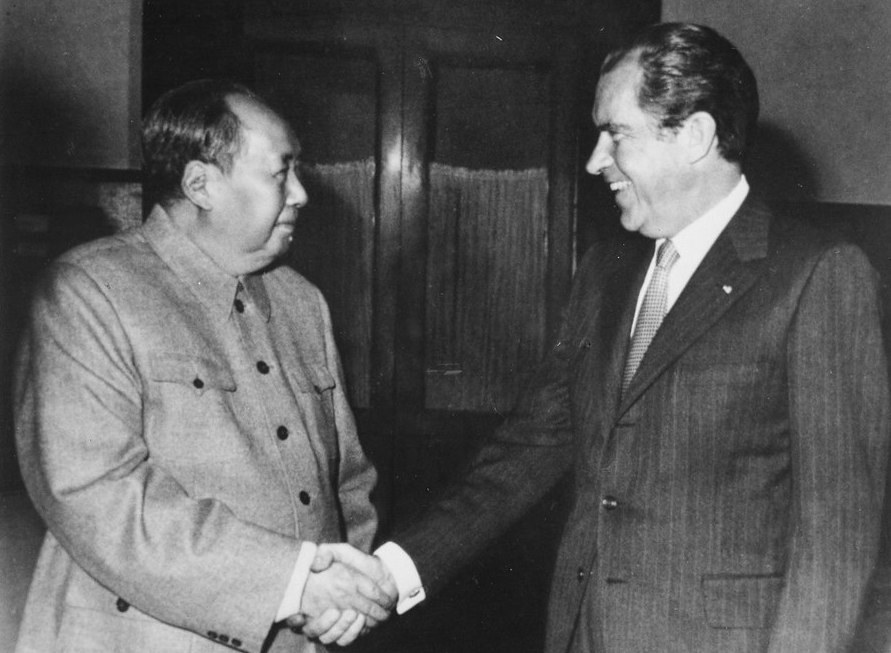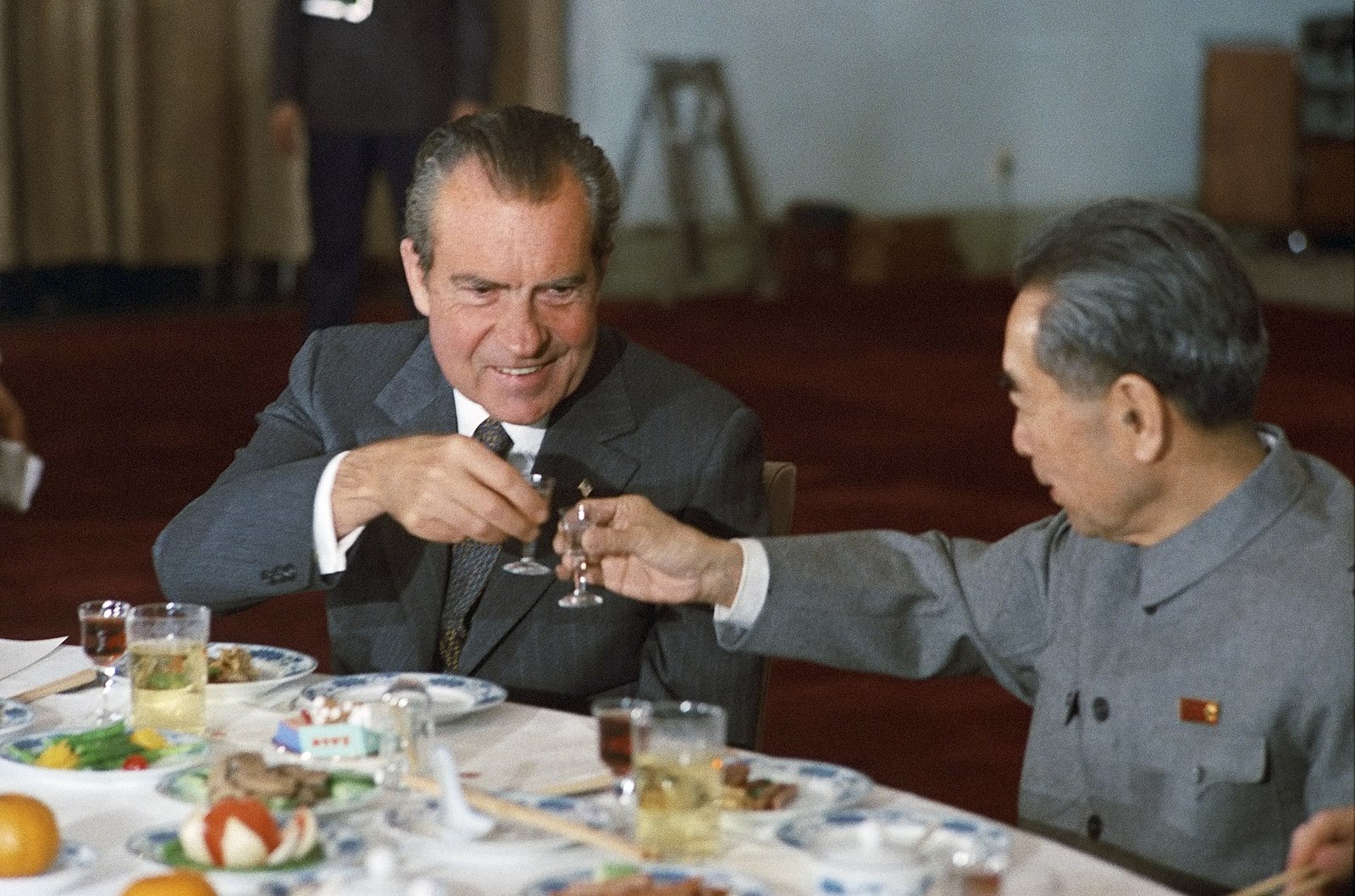The ‘Vietnam Problem’ in Early Sino-US Rapprochement (Part I)
- Sino-US ties are currently at one of its lowest points
- Detente during the Nixon-Mao era can shed light on current events

Worsening tensions between the United States and the People’s Republic of China (PRC) have gripped the world’s attention following the exacerbation of the COVID-19 epidemic, since late January of 2020. In the latest political salvo, U.S President Donald J. Trump pointed his finger at Beijing for its perceived mishandling of the coronavirus pandemic and ‘disinformation campaign’, aided by the World Health Organization (WHO), during the early phases of Covid-19.
Trump intimated that:
“We’re doing very serious investigations … We are not happy with China. There are a lot of ways you can hold them accountable.”
Al Jazeera, 28th April
Meanwhile, Chinese media Global Times rhetorically retaliated against Washington’s accusations, and attacked the Trump Administration, “It is the urgent political need of the Republican-led government to pass the buck to China for its own failure to contain the outbreak, so as to win the upcoming election”.
Indeed, both media and academic pundits worldwide increasingly hold a pessimistic view on the picture of the post-pandemic international relations as caused by the seemingly irreversible downturn in the Sino-US relationship.
Many more might be puzzled by a simple question: Why do the two most important superpowers on earth repeatedly fail to work with each other in front of a global crisis, especially at this urgent moment when collaboration is desperately needed? To answer such a complex question, it is worthwhile to look back to history and the initial relationship between Beijing and Washington in the early 1970s. History may not be able to offer a direct answer but it can offer at least some helpful insights into comprehending the current dilemma.
‘Vietnam Problem’: The Enemy of My Enemy is My Friend?
After Richard Nixon won the United States presidential election on 4 November 1968, Washington experienced a critical transition in its foreign policy and developed the strategy of ‘détente’ to address various challenges it had been confronting since the 1960s. US President Nixon and the Secretary of State Henry Kissinger perceived ‘détente’ as attempts to continuously contain the power and influence of the Soviet Union.
The goal was not to change Soviet conception of international affairs in the Cold War, but ‘integrate it as a stable element into the existing world order’.[1] East Asia, particularly China and Vietnam, became the primary place for Nixon Administration to implement the ‘détente’ strategy, as the United States wanted to get rid of the Vietnam War quagmire.
At around the same time, PRC Chairman Mao Zedong realised the Cultural Revolution he launched, pushed the country to a dead end.[2] Driven by economic needs, Mao began to use more moderate political leaders in the Chinese Communist Party (CCP) under him to promote a less radical foreign policy.[3] Beijing had thus, arguably started the process of re-integration into the western-dominated global system. Finally, both the RPC and the United States yearned for rapprochement after twenty years of mutual animosity in international relations.
Yet, China was more passive than the United States in Sino-US rapprochement at the beginning of 1971. Beijing only became increasingly active in developing this rapprochement from March till May. In March, after the table tennis world championships in Nagoya, Japan (in which Chinese and American players had several unplanned encounters), Mao seized the opportunity to invite the American table tennis team to visit China.[4]
Between April and May, China and the United States used the Pakistani channel to gradually confirm Kissinger’s visit to Beijing in summer.[5] Washington then sent a message to inform Beijing that the first meeting between Kissinger and Beijing’s high officials should be ‘strictly secret’ and ‘it is essential that no other channel be used’.[6]
During the respective preparations, China and the United States prioritised different goals for the negotiation. In May, during a CCP Central Committee Plenum, China ranked Vietnam as the least important topic for the talks.[7] In contrast, Nixon mostly demanded progresses from China to solve the ‘Vietnam problem’. In their meeting on 1 July 1971, Nixon even told Kissinger to ‘build on fears’ in Beijing, including the fears of further US escalation in Vietnam.[8]
What does this episode on Vietnam tell us about early Sino-US rapprochement?
The Nixon Administration failed to understand China’s intention and interests accurately right from the beginning. Nixon and Kissinger overestimated Beijing’s willingness to come to Washington under Moscow’s menace. They wishfully believed the Chinese leaders would accept or even embrace their forthcoming proposals due to the ‘common enemy’ — the Soviet Union. After close to two decades of mutual animosity, they were still convinced that ‘the enemy of my enemy is my friend’.
But Beijing did not share this exact sentiment. In the eyes of the CCP, ‘the enemy of my enemy can still be my enemy’.
Furthermore, the miscalculation by the Nixon Administration also revealed a weakness of US policy towards China that still exerts an influence today: Washington often projects its own diplomatic logic onto Beijing. This mentality often leads the United States to mute and discard what the RPC really wants, especially on many international issues that would require both to cooperate. As a result, Washington’s wishful assumption has been frequently interpreted by Beijing as a ‘unilateral stance’ to uphold the ‘American hegemony’ in international affairs. This is a refrain that persists, from the Nixon Administration to the Trump administration.
This is part of an on-going series examining the history of China’s relationship with the United States.
John Gaddis, Strategies of Containment: A Critical Appraisal of American National Security Policy during the Cold War (Revised and Expanded Edition) (Oxford: Oxford University Press, 2005), 287.
Lorenz M. Lüthi, ‘Chinese Foreign Policy, 1960-1979’, in Tsuyoshi Hasegawa, ed., The Cold War in East Asia, 1945-1991 (Stanford, CA: Stanford University Press, 2011), 160.
Ibid.
Chen Jian, ‘China, the Vietnam War, and Sino-American Rapprochement’, 51.
Lorenz M. Lüthi, ‘Beyond Betrayal: Beijing, Moscow, and Paris Negotiations, 1971-1973’, 63-64.
‘Document 125. Message from the Government of the United States to the Government of the People’s Republic of China’, 10 May 1971, Foreign Relations of the United States (FRUS), 1969-1976, Vol. XVII. (Hereinafter cited to as FRUS.)
Lorenz M. Lüthi, ‘Beyond Betrayal: Beijing, Moscow, and Paris Negotiations, 1971-1973’, 64.
Chris Tudda, A Cold War Turning Point: Nixon and China, 1969-1972 (Barton Rouge, LA: LSU Press, 2012), 91.
Author
-

Hao Chen is a Ph.D. candidate in the Faculty of History, University of Cambridge. His article 'Resisting Bandung? Taiwan’s Struggle for ‘Representational Legitimacy’ in the Rise of Asian People’s’ Anti-Communist League, 1954-57' is published in The International History Review journal.
View all posts
Hao Chen is a Ph.D. candidate in the Faculty of History, University of Cambridge. His article 'Resisting Bandung? Taiwan’s Struggle for ‘Representational Legitimacy’ in the Rise of Asian People’s’ Anti-Communist League, 1954-57' is published in The International History Review journal.



